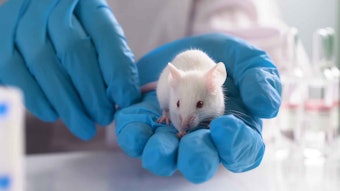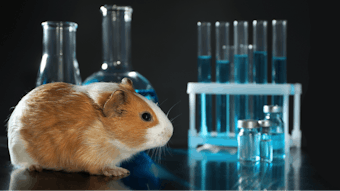The National Institute of Environmental Health Sciences (NIEHS) and the National Toxicology Program Interagency Center for the Evaluation of Alternative Toxicological Methods (NICEATM) invite public comments that can be considered by the Interagency Coordinating Committee on the Validation of Alternative Methods (ICCVAM) and the agencies' program offices in updating the NICEATM–ICCVAM 2008–2012 Five-Year Plan to develop the 2013–2017 Five-Year Plan.
A request for comments was published in the Federal Register on Nov. 21, 2011 (76 FR 71977). Comments are requested by Jan. 15, 2012, and can be submitted to NICEATM.
The plan addresses: identification of areas of high priority for new and revised non-animal and alternative assays to reduce, refine (enhance animal well-being and lessen or avoid pain and distress), and replace the use of animals in testing; and research, development, translation, and validation of new and revised non-animal and other alternative assays for integration into Federal agency testing programs.
Activities and achievements relevant to the goals and objectives identified in the current Five-Year Plan are noted in the 2008–2009 ICCVAM Biennial Report.
With regard to reducing, refining, and replacing animal use, ICCVAM identified and ranked the types of regulatory safety tests in the 2008–2012 plan that it considers to be the highest priority for the development and validation of alternative test methods. These priorities were based on the severity of unrelieved pain and distress and the number of animals involved in each type of testing. The highest priority testing areas include: acute eye irritation and corrosion; acute skin toxicity (including irritation/corrosion, sensitization, absorption); acute systemic toxicity (acute poisoning) by oral, dermal, and inhalation routes; and biologics and vaccines testing. Other priority testing areas include immunotoxicity, endocrine disruptors, pyrogenicity, reproductive/developmental toxicity, and chronic toxicity/carcinogenicity, and neurotoxicity as an area of interest.
NIEHS and NICEATM seek public input on the following questions:
- Are these priority areas appropriate with regards to NICEATM and ICCVAM activities over the next five years?
- Considering available science and technology, what development, translation, and validation activities are most likely to have the greatest impact within the next five years on reducing, refining, or replacing animal use in the priority areas?
- What research and development activities hold the greatest promise in the long term for reducing, refining, or replacing animal use in the priority areas?
- What are appropriate measures for evaluating progress in enhancing the development and use of alternative test methods in the priority areas?
All comments received will be posted on the NICEATM-ICCVAM website and identified by the individual's name and affiliation or sponsoring organization. Comments received before Jan.15, 2012, will be considered in development of the draft 2013–2017 Five-Year Plan, which will be made available for public comment later in 2012.




![A 2019 petition to the House of Commons stated, 'We, the undersigned residents of Canada, draw the attention of the House of Commons ... [that] animal testing is unnecessary to prove the safety of cosmetic products.'](https://img.cosmeticsandtoiletries.com/files/base/allured/all/image/2023/01/animal_testing_ban_canada_dreamstime_m_215632720.63d313232306d.png?auto=format%2Ccompress&fit=crop&h=191&q=70&rect=0%2C73%2C1800%2C1013&w=340)





